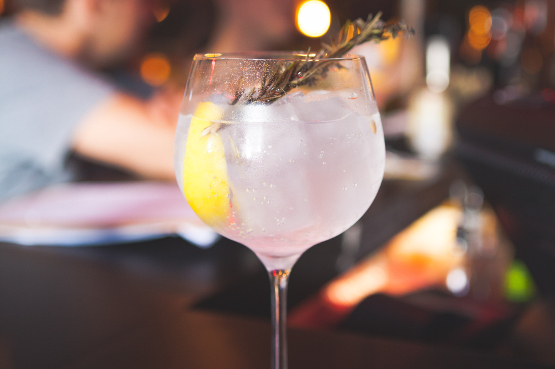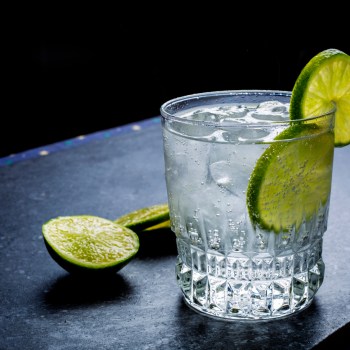Garnishes & Tonics With James Connolly, Enrique’s School for Bullfighting, Perth
Why is the gin category so interesting right now?
Gin is the new vodka, there’s so much more you can do with it now. Gone are the days of walking into your pub and getting some generic gin with some post-mix tonic and a bit of dried-up lemon chucked in. At Enrique’s, our serves take gin and tonic to a new level and it has been incredibly well received. I thought it was a risk when we first did it – I was just back from Barcelona and my boss-to-be said that he was opening up a Spanish pop-up bar and did I have any crazy ideas? So I said ‘what about gin and tonics?’ I explained that you can go into places like Bobby Gin in Barcelona, where there is a huge array of tonic waters and gins, and said let’s do something along these lines. And he said ‘ok, sounds like fun’. I was incredibly nervous but it’s been phenomenal. We don’t have the biggest gin collection in town, by any means, but I think many people would recognise us as one of, if not the best, gin joint in town.
How should you go about creating a menu of gins and tonics?
I remember being somewhere and it essentially had a list of spirits, then a list of mixers and a list of garnishes, and I thought that was a really smart idea. And then, I thought why don’t we do that with gins and tonics. In Spain there is something like 42 brands of tonic water available, in Australia, I reckon we’ve probably got six or seven good ones and about 15 in total. Then the trick was with the garnishes to have flavours that you already know work really well with gin. It’s pretty hard to make a bad gin and tonic from the combinations that we have.
What are some think-outside-the-box recommendations?
A personal favourite is Fever-Tree tonic with red capsicum and kaffir lime leaf – it’s a killer combination with a nice London Dry with a bit of punch, like a Fords, or Fifty Pounds or something like that. Obviously we also explain that cucumber goes with other gins and not just Hendrick’s, which is an interesting one. And we’ve had a few failures – we had radish for a while, and I thought it worked really well. It had really earthy sort of flavours and a bit of spiciness, but it was a bit too far for the clientele. Fresh orange and coriander is a really tasty one, and elderflower tonic with strawberry and basil is probably one of our bestsellers.
What is important when matching a gin to a tonic and then adding a garnish?
I would taste all elements separately first. Obviously with gin the botanicals are quite important and finding stuff that matches or complements the botanicals is really key. Obviously the tonic is going to play a really important part as it is around 50 to 75 per cent of you drink so it is just as important as the gin itself. If you’ve got strong flavours then you don’t want a too overpowering tonic water.
What about glassware?
General presentation is very important. If you’re serving it in a rocks glass then it is just another gin and tonic, where if you change the glassware up, you make sure the garnish is prevalent and it has those eye-catching theatrics, people are going to notice and think ‘what is that person drinking?’. We have a lot of people in that haven’t tried a Spanish gin and tonic and they see people drinking them out of White Burgundy glasses – it just creates a different element to the drink and makes it stand out



